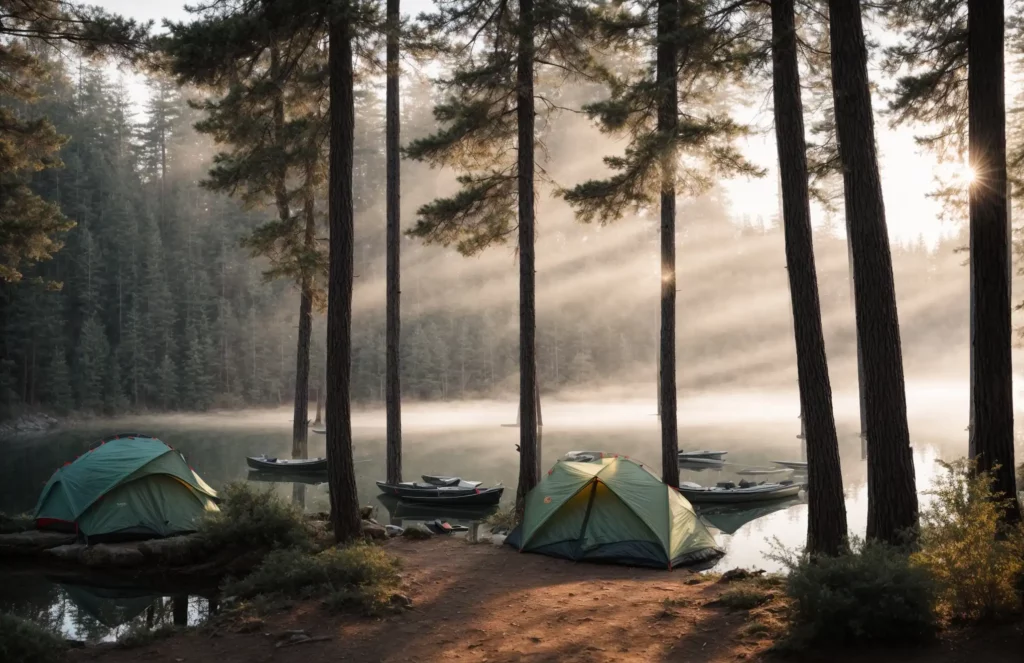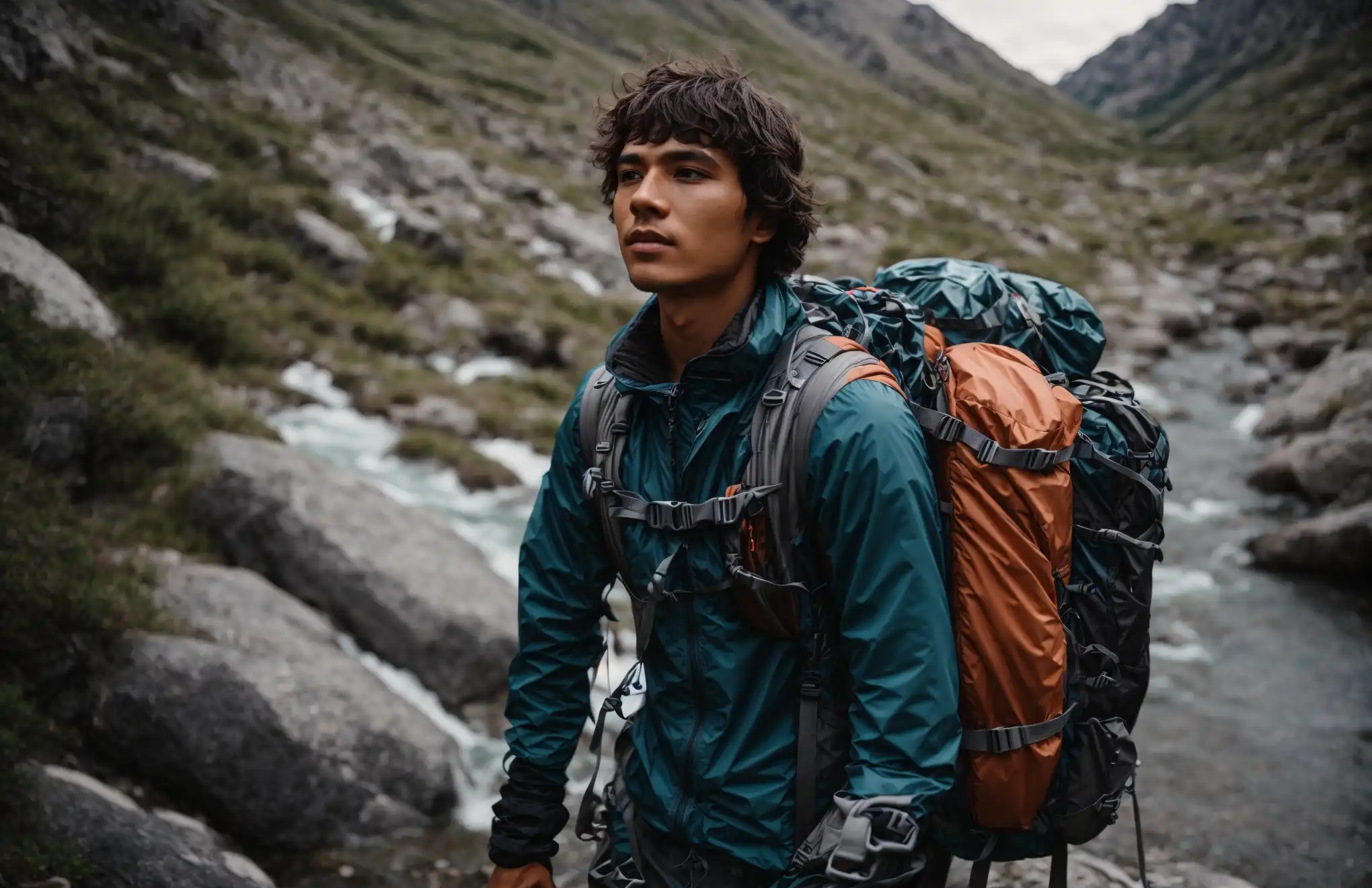The best time to go camping is typically during the late spring to early fall. Weather conditions are more favorable for outdoor activities during these months.
Embarking on a camping adventure aligns closely with favorable weather, intrinsically connecting the experience to the rhythms of nature. Late spring welcomes warmer days and cool nights, creating an ideal setting for campfires and stargazing. As summer unfolds, longer days provide ample time for hiking, fishing, and exploring the great outdoors.
The arrival of early fall brings a tapestry of changing leaves and crisp air, perfect for cozy campsite evenings. To ensure an enjoyable camping trip, it’s essential to consider regional climate variations and peak seasons, aiming for a balance between comfortable weather and avoiding overcrowded parks. Selecting the right time not only enhances the experience but also ensures that your interaction with nature is both safe and rewarding.
The Camping Seasons
Welcome to a journey through the seasons, tailored for outdoor enthusiasts eager to embrace the wilderness! Selecting the optimal time for your camping adventure can dramatically enhance your experience. Different seasons offer unique opportunities to connect with nature, and understanding the dynamics of each is crucial for a satisfying escapade.
Understanding Different Camping Environments
Nature’s tapestry changes with the seasons, affecting the camping environments you’ll encounter. From the rejuvenating greens of spring to the golden hues of autumn, each environment promises a distinct backdrop for camping. Recognize the characteristics of various landscapes and climates to align your trips with the environment best suited to your camping desires.
| Season | Environment | Features |
|---|---|---|
| Spring | Budding forests, meadows | Flowing streams, wildflowers |
| Summer | Lush greenery, high altitudes | Warm weather, clear skies |
| Autumn | Deciduous landscapes | Cooler temps, fall foliage |
| Winter | Snow-capped mountains, frozen lakes | Silence, snow activities |
Pros and Cons of Camping In Various Seasons
- Spring: Embrace the awakening of the wild but prepare for unpredictable weather and potential mud.
- Summer: Ideal for sun-seekers and extended daylight hours, yet expect crowded campsites and higher temperatures.
- Autumn: Enjoy the tranquility and vibrant colors with fewer insects, but daylight diminishes quickly.
- Winter: Experience serene snowbound landscapes and winter sports, with challenges such as extreme cold and specialized gear requirements.
Each season offers a spectrum of experiences. Anticipate the benefits and drawbacks to pick a time that aligns with your adventure goals and comfort level.
Spring Camping: Awakening With Nature
As winter thaws to reveal blooming flowers and chirping birds, spring beckons outdoor enthusiasts out of hibernation. Embrace the warming weather and witness the resurgence of flora and fauna by embarking on a spring camping adventure. From lush greenery to the vibrant palette of nature in full bloom, camping in spring is about synchronizing with the rhythms of the earth as it awakens from its slumber.

What to Expect When Camping In Spring
Welcoming spring while nestled in the great outdoors means preparing for a season of contrasts. Diverse weather conditions can range from last whispers of winter chill to sudden rain showers, or pleasant stretches of sunny warmth. Wildlife activity peaks, with animals actively foraging and birds taking to the skies. Campers should pack layers and moisture-wicking apparel to remain comfortable and adapt to changing conditions. Be mindful of the melting snowpack that can lead to swollen rivers and soggy trails.
Top Tips For Spring Camping Success
- Check the Weather: Keep an eye on forecasts and be ready for rapid changes.
- Appropriate Gear: Waterproof tents and sleeping bags rated for cooler temperatures are crucial.
- Wardrobe Wisdom: Dress in layers and pack extra clothing for unexpected dips in temperature.
- Wilderness Watchfulness: Be alert for wildlife activity; spring is a busy season for animals coming out of hibernation.
- Leave No Trace: Respect nature by minimizing your footprint and cleaning up after yourself.
Best Locations For Spring Camping
Spring showers life across various landscapes; some sites stand out as particularly mesmerizing. In these top spring camping destinations, nature’s revival unfolds in spectacular fashion.
| Location | Highlights |
|---|---|
| Great Smoky Mountains National Park | Wildflower blooms and waterfalls. |
| Joshua Tree National Park | Desert beauty and moderate temperatures. |
| Yosemite National Park | Cascading waterfalls and fresh meadows. |
| Shenandoah National Park | Lush greenery and extensive hiking trails. |
Summer Camping: Peak Season Adventures
As the sun smiles brighter and the days grow longer, the call of the wild turns irresistibly compelling. Summer camping embodies the quintessential outdoor experience, offering extended daylight hours to explore and bask in nature’s warmth. Whether you’re a seasoned camper or a novice eager to pitch your first tent, the summer season holds the promise of unforgettable adventures under the canvas of a starlit sky.
Benefits of Camping During the Summer
Embracing the great outdoors during the summer season comes with a plethora of perks:
- Extended daylight allows for more time to indulge in activities such as hiking, fishing, and swimming.
- With warmer weather, campers enjoy a more comfortable camping experience free from the chill of spring or fall nights.
- The summer brings about a wide range of flora and fauna, perfect for wildlife enthusiasts and photographers.
- Social interactions thrive in campgrounds, providing opportunities to connect with fellow outdoor lovers.
Challenges and How to Overcome Them
Yet, with the allure of summer camping also come certain hurdles:
| Challenge | Solution |
|---|---|
| Overcrowded Campsites | Book in advance or seek out less-known camping spots to avoid the crowds. |
| Extreme Heat | Stay hydrated, wear sun protection, and plan activities during cooler parts of the day. |
| Insects and Bugs | Use repellents and wear appropriate clothing to keep the bugs at bay. |
Despite these challenges, thoughtful planning and preparation ensure a smooth summer camping journey.
Selecting the Perfect Summer Camping Spots
Choosing the right campsite is critical for a summer adventure:
- Look for locations near water bodies for a refreshing dip and added scenic beauty.
- Consider elevation, as higher altitudes can offer cooler temperatures.
- Research the amenities and activities available to ensure they align with your camping goals.
- Investigate the area’s wildlife and plant life to enhance your nature experience.
Picking the perfect spot requires a balance of scenic beauty, comfort, and accessibility. With careful consideration, you’ll find a summer sanctuary that feels like your own slice of paradise.
Know more: What Size Generator Do I Need for Camping
Fall Camping: Enjoying the Foliage and Cooler Temperatures
As the leaves turn from green to a tapestry of fiery reds, warm oranges, and golden yellows, the landscape transforms into a magnificent canvas, inviting nature enthusiasts to embrace the beauty of autumn. Fall camping offers a symphony of rustling leaves underfoot and a refreshing coolness in the air, making it an exceptional time for outdoor adventures. It’s not just the scenery that beckons campers but a whole different camping experience characterized by fewer crowds, quiet surroundings, and the unique charm of the season.
Why Fall Might Be the Best Time for Camping
Fall marks a sweet spot for campers. With the dwindling summer crowds, campgrounds become more peaceful, allowing for a serene connection with nature. The cooler temperatures provide comfort during the day and cozy campfire evenings. Wildlife is often more active in preparation for winter, and without the veil of summer heat, there is unparalleled clarity in the night skies, perfect for stargazing. Plus, the risk of mosquitoes and other pests diminish, making your outdoor stay more enjoyable.
Essential Gear For Autumn Camping
- Four-Season Tent – Provides insulation against chilling winds and unexpected early snow.
- Sleeping Bag Rated for Lower Temperatures – Ensures a warm and comfortable sleep as the mercury dips.
- Layers of Clothing – Enables temperature regulation as you move from brisk mornings to temperate afternoons.
- Insulated Mat – Creates a barrier from the cold ground.
- Waterproof Gear – Keeps you dry through dewy mornings and possible rain showers.
- Reliable Stove – For warm meals on crisp evenings.
Remember to check the weather forecast before heading out and prepare for shorter days by packing ample lighting.
Recommended Destinations For Fall Camping
| Destination | Foliage Peak Season | Activities |
|---|---|---|
| Acadia National Park, Maine | Early to Mid-October | Hiking, Photography, Wildlife Watching |
| Great Smoky Mountains, Tennessee/North Carolina | October to Early November | Biking, Fishing, Historic Sites |
| Aspen, Colorado | Late September to Early October | Mountain Biking, Hot Springs, Gold-Rush Town Tours |
Choosing a destination known for its autumn splendor can enhance your camping experience significantly. Research parks and forests that are celebrated for their fall foliage and plan your trip around peak color periods to get the most out of your journey.
Winter Camping: For the Hardy and Prepared
Cloaked in snow and bathed in the silence of sleeping nature, winter camping beckons the intrepid adventurer seeking a different kind of outdoor experience. This unique form of camping offers the serenity of pristine landscapes and the challenge of the elements. Though it may not be for the faint of heart, those equipped with the right gear, knowledge, and a zeal for the extraordinary, may find winter camping an unrivaled escapade.
The Lure Of Winter Camping: Is It For You?
Winter camping sets the stage for an unforgettable experience. Imagine witnessing crystalline ice formations and animal tracks dotting the landscape, with the potential for northern lights overhead. It’s conducive for activities like ice fishing, snowshoeing, and cross-country skiing. Before delving into this icy wonderland, assess your skillset and readiness to confront lower temperatures and unpredictable conditions. Winter camping is rewarding, yet demands respect and preparation.
Surviving and Thriving: Winter Camping Tips
- Select the right sleeping bag: Opt for one rated at least 10 degrees colder than the maximum low expected.
- Dress in layers: Moisture-wicking base layers, insulating mid-layers, and a weatherproof shell are essential.
- Stay hydrated and nourished: Your body burns more calories in the cold, so high-energy food and adequate water are vital.
- Keep dry: Wet conditions can lead to hypothermia. Pack extra clothing and seal wet items away from dry gear.
Beyond gear and clothing, brush up on winter survival skills. Knowledge of how to build a snow shelter, identify signs of frostbite and hypothermia, as well as navigating in snow-heavy terrain, can make or break the experience.
Ideal Winter Camping Locations
Picking the perfect spot for winter camping depends on your desired level of isolation, scenic preferences, and availability of emergency resources. Here are a few destinations bound to enchant the winter camper:
- Yellowstone National Park, Wyoming – Geysers and wildlife against the snow.
- Lake Placid, New York – Winter sports haven with well-managed camping facilities.
- Glacier National Park, Montana – Astonishing views with the likelihood of solitude.
Always check specific park regulations and road accessibility since many parks operate differently in winter months.
Conclusion
Selecting the perfect time for your camping adventure is key to a memorable experience. Opt for spring’s vibrant landscapes or fall’s cooler nights. Remember, your preference shapes the ideal season. Prepare well, and every trip can become your best yet.
Don’t miss out on the wealth of knowledge waiting for you in the Learning section of Outdoor Awaits – where every reader becomes an explorer. Happy camping!
Sukhen is a passionate blogger and traveler who visited many historical places in Bangladesh, Myanmar, India, and Thailand. He’s an avid camper, so he shares his knowledge of camping and wildlife with his readers. He also helps readers plan their own camping trips. To know more, stay connected with Outdoor Awaits.

